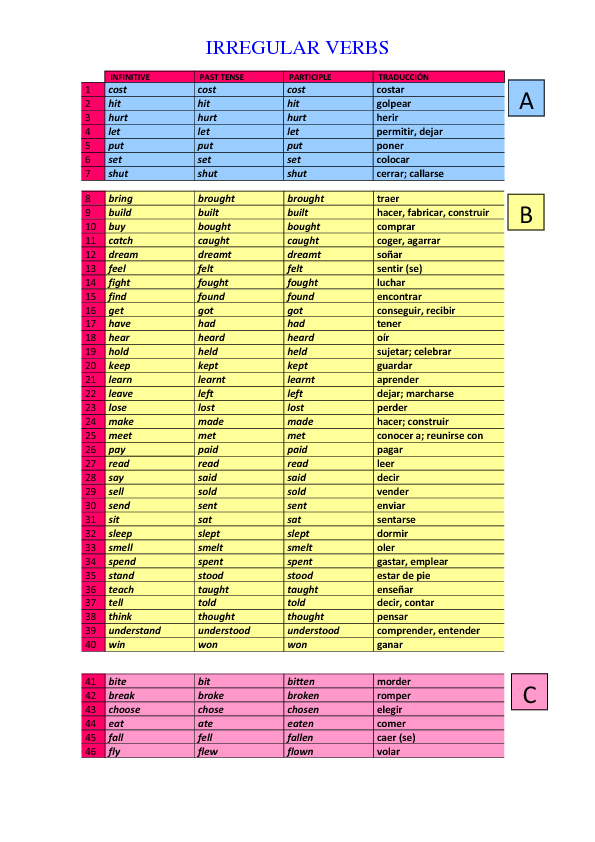

Here is the list of verbs and their preterite stems:
DO SPANISH IRREGULAR PAST TENSE VERBS HAVE ACCENTS FULL
It is easier to understand with a visual, so here is the full conjugation for leer. Only a handful of verbs, the most common being leer, creer, and oír, are in this group. Additionally, there are accent marks in every conjugati on except for ellos/ellas/ustedes. This category is called Y verbs because in the third person singular (él/ella/usted) and third person plural (ellos/ellas/ustedes) the letter “y” is in the verb ending. When said out loud these verbs sound like regular verbs, and the irregularity in spelling is there in order to preserve the sound. The preterite yo form for these verbs is as follows:Īs you can see, -car becomes -qué, -gar becomes gué, -zar becomes cé. If you know Spanish formal commands, then these irregulars will look familiar. Verbs ending in -car, -gar, and -zar are irregular in the yo form only, otherwise, they follow the usual regular endings. Fui could mean “I was” or “I went”! You will know which verb is being used through context, as fui al supermercado obviously means “I went to the supermarket” not “I was to the supermarket.” Below is the conjugation. SER and IRįor some reason ser and ir are totally irregular and look exactly the same in the preterite tense. There are quite a few irregulars, and many are commonly used verbs, but here they are broken down into easy-to-study groups so you can learn them a few at a time. It is important to note that just because a verb is irregular in the present does not mean that it is irregular in the preterite. Irregular Verbs In Spanish Preterite Tense Here are some examples of regular -er and -ir preterite conjugations: Just remember that -er and -ir are the same and that all of these endings start with the letter I. Since -er and -ir verbs have the same preterite endings there is less to study! However, a common mistake made by beginners is to make up a new -er ending and say comemos instead of comimos. My friend listened to music at the concert. Last week we spent a lot of money at the store. La semana pasada gastamos mucho dinero en la tienda. Here are some examples of regular -ar preterite conjugations: It is important to use these accent marks because hablo means “I speak” while habló means “he/she/you formal speak.”Īlso, the nosotros form has the exact same ending as the present tense, so when you see a verb like cocinamos it could mean “we cook” or “we cooked.” Context will show whether it is referring to the past or the present!

Note the accent marks in the yo and él/ella/usted endings.

Below are the regular preterite endings for each pronoun. Much like the present tense, to conjugate in the preterite simply remove the infinitive verb ending ( -ar, -er, -ir ) then attach the appropriate ending to the remaining root. Master the Spanish Definite and Indefinite Articles in 10 Min.Body Parts in Spanish: Vocabulary, Grammar and More!.Possessive Pronouns in Spanish - A Complete Guide with Examples.15 Irregular Verbs in Spanish: Cheat Sheets Included.Spanish Direct Object Pronouns Explained In Simple Language!.Verbs That Change Meaning In Spanish Preterite Tense.Irregular Verbs In Spanish Preterite Tense.Regular Verbs In Spanish Preterite Tense.


 0 kommentar(er)
0 kommentar(er)
